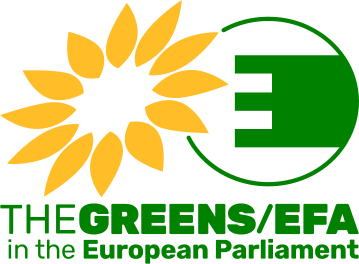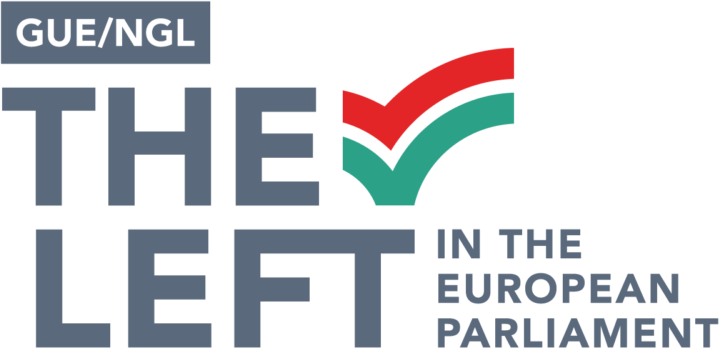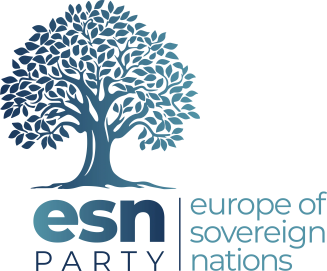Understanding European party funding
About European parties
Context
The European Parliament – then the Common Assembly of the European Coal and Steel Community – was founded in 1952. Following the 1958 Treaties of Rome, establishing the European Economic Community and Euratom, the Common Assembly was renamed European Parliamentary Assembly, serving all three communities. The decision of representatives to sit by ideology, and not by nationality, led to the creation of European political families, later named “political groups” of the European Parliament.1
European political parties – or “political parties at European level” – only emerged twenty years later, ahead of the first election of the European Parliament by universal suffrage in 1979. While political groups are groups of elected Members of the European Parliament (MEPs) and work in the framework of parliamentary activities, European political parties are extra-parliamentary entities. While often overlooked by citizens, the difference between parliamentary groups and extra-parliamentary political parties is also found in many European countries.
| European political party | Political group | |
|---|---|---|
 |
➜ |  |
 |
➜ |  |
  |
➜ |  |
  |
➜ |  |
  |
➜ |  |
 |
➜ |  |
  |
➜ |  |
 |
➜ |  |
Official recognition of European parties
For over ten years, European political parties operated without official recognition and mostly in the shadow of their political groups. In 1992, the Maastricht Treaty formalised their status in Article 138a (the “party article”): “Political parties at European level are important as a factor for integration within the Union. They contribute to forming a European awareness and to expressing the political will of the citizens of the Union.” This article changed numbers several times and is now found in a similar phrasing in Article 10(4) of the Treaty on European Union.
In 2000, the Court of Auditors criticised the funding of European parties from the budget of political groups, leading to a new article, added by the 2001 Treaty of Nice, allowing the funding of European parties from the budget of the European Union. In 2003, Regulation 2004/2003 officially defined European parties and created a system of public funding. In 2014, Regulation 1141/2014 overhauled the existing framework for European political parties and foundations, including by giving them legal status, and established the Authority for European political parties and European political foundations (APPF) for the purpose of registering, controlling and imposing sanctions on European political parties and foundations. This Regulation, amended in 2018 and 2019, is the current framework for the funding of European parties.2
Who are the European parties?
While European political parties are broadly defined as “structured cooperation[s] between [national] political parties and/or citizens”, Regulation 1141/2014 imposes strict criteria for the registration of European parties by the APPF.
Among others, either:
- its national member parties must be represented, in at least seven Member States, by MEPs or in national or regional parliaments; OR
- the European party or its national member parties must have received, in at least seven Member States, 3% of the vote cast at the most recent European elections.
As a result of these representation criteria, it is not sufficient for a political organisation to be present across Europe, or even to have national political parties set up together with a European structure. For instance, the European Pirate Party and Volt Europa gather, respectively, 16 and 18 national political parties across the EU but are not registered as European political parties with the APPF, as they do not meet the above representation criteria.3
The European Party Funding Observatory covers all European parties listed in relevant EU funding documents. Since the entry into force of Regulation 1141/2014, this concerns exclusively entities registered with the APPF; for previous years, this concerns entities qualifying for European public funding under the framework applicable at the time.
Public funding
Regulation 2004/2003 (amended in 2007) set up the first framework of public funding for European political parties, which was later strengthened in Regulation 1141/2014, amended in 2018 and 2019.
Where does public funding come from?
European political parties are allowed to receive funding from the budget of the European Union, but not from that of Member States or non-EU countries; therefore, unless indicated otherwise, the term “public funding” here refers to funding from the budget of the European Union.
In order to qualify for funding from the budget of the European Union, registered European parties must meet two funding requirements: they must have at least one elected member MEP, and they must not be in one of the "situations of exclusion" defined in the EU's Financial Regulation.
How does European public funding work?
Every year, the Bureau of the European Parliament decides on a total amount of funding for all European political parties. In practice, this figure does not change in subsequent budget discussions.
For the financial year 2025, €46 million were allocated for the public funding of European parties (around €0.10 per European citizens).
Out of this total amount:
- 10% is allocated equally to all registered European parties qualifying for public funding. For the financial year 2025, this amounted to €4.6 million for all parties combined. Since all twelve European parties met the funding requirements, they were each entitled to a lump sum of €383,333. Between 2004 and 2018, the share of the lump was 15% of the total amount allocated to European parties.
- the remaining 90% is allocated in proportion to European parties’ number of member MEPs. For instance, for the financial year 2025, the EPP had 182 member MEPs out of 643 MEPs associated to a European political party; it was therefore entitled to a little over 28% of the €41,400,000 available for MEP-based funding – or around €11.7 million.
- the sum of the above lump sum and MEP-based funding constitute each party’s maximum available grant for a given financial year. At the end of the funding process, a European party may receive less, but not more, than this amount.
Regulation 1141/2014 requires European political parties to co-finance their activities. Currently, this co-financing rate stands at 10%, meaning that European parties must raise at least 10% of their budget in private funding, and that the public funding they receive from the EU cannot be more than 90% of this budget.4
In their application for public funding, European parties submit a draft budget listing their planned expenses for the next financial year. Regulation 1141/2014 defines as “reimbursable expenditure” the expenses that a party is allowed to account for; other expenses are not counted. European parties receive, as a pre-payment, the lowest amount between: 1) the European party's maximum available grant, 2) 90% of the party's reimbursable expenditure listed in its budget, and 3) the amount the party actually asked for.5
After the financial year, a final budget is established with figures of actual expenses. If a European party spent less than anticipated (thereby decreasing its reimbursable expenditure) or failed to raise 10% of its reimbursable expenditure in private funding, its final amount of public funding decreases. If it spent more than expected or raised more private funding, its final amount of public funding may increase, up until its maximum available grant for that year. Depending on the amount given as pre-payment and the final adjustments, European parties may receive additional public funding or need to reimburse part of the amount already received.
What are the trends of public funding?
There are two major long-running trends in European public funding:
- The amount of public funding increases. With the exception of 2020, where Brexit suddenly reduced the population of the European Union, the total amount of public funding allocated to European parties has increased continuously, from €6.5 million in 2004 (€9.8 million adjusted to 2024) to €50 million in 2024.
- The co-financing rate decreases. With successive reforms of the framework on European party funding, the share of private funding that European parties were required to raise has continuously decreased. In 2004, this rate stood at 25%; in 2018, it was brought down to 15%, and decreased to 10% in 2019. Finally, in September 2022, the European Parliament approved a proposal by the European Commission to bring this rate down to 5% of reimbursable expenditure, and to 0% in years of European elections, meaning European parties would no longer need to rely on private funding; this proposal is currently being discussed by the European Parliament and the Council of the European Union.
Funding process and timeline
The process of allocation of public funding to European political parties is a long and complex one. For a given financial year N, the process starts in year N-1 and concludes in year N+2.
The major steps of this process are:
- Budget allocation. The Secretary-General of the European Parliament presents a proposal for the institution’s budget for the following year, including the amount to be allocated to European political parties. Based on this, the Bureau adopts its proposal and submits it to the Budget Committee. This takes place between February and April of year N-1.
- Call for proposal. The European Parliament issues a call for proposals inviting European parties to apply for public funding. This takes place in May/June of year N-1.
- Deadline for submission. European parties submit their application for public funding to the European Parliament. The deadline for applications is around September of year N-1.
- Funding decision. The Bureau of the European Parliament decides on the maximum available grants that can be allocated to each European party. This decision is usually taken in December of year N-1.
- Pre-financing. Following the decision of the Bureau, part or all of the maximum available grant is provided as pre-payment to European parties. This usually takes place in January/February of year N.
- Provision of final reports. Following the financial year, European parties send their final reports detailing their income and expenditure to the European Parliament. Reports must be provided by end of June N+1.
- Decision on final reports. The European Parliament reviews final reports and makes a decision regarding European parties’ final amount of public funding, based on their real reimbursable expenditure. Decision used to be taken around September of year N+1, and now arrive around February of year N+2.
- Balance of payment. Once each European party’s final amount of public funding is determined, European parties either receive supplementary funding or must pay back part of their pre-payment. This used to take place in September/October of year N+1, and now takes place in January or even April/May N+2.
The documents used for the European Party Funding Observatory are:
- the funding decisions made by the European Parliament (step 4 above);
- the financial reports published by European political parties (for donations and contributions);
- data on donations and contributions published by the APPF; and
- the final reports adopted by the European Parliament (step 7 above).
The Observatory’s data is periodically updated as we procure new documents from the
European Parliament and the APPF. Click here
to receive e-mail notifications when our data is updated or subscribe to our
RSS feed ![]() .
.
Please note that, given the scattered publications of these documents and their different focus, there may temporarily be inconsistencies in the data reported. Additionally, given the low quality of many PDF documents provided by the European Parliament, there may be some slightly inexact figures. These are not sufficient to call into question the broad trends and comparisons provided by the Observatory. Nevertheless, we encourage European parties to come forward with corrections should any such mistake be identified.
In terms of transparency, citizens could request decisions regarding European party funding in full (unredacted) five years following the discharge of the budget of the European Union, which itself takes place in May or October of year N+2 (where N is the year of the budget in question). As a result, the reasoning supporting the funding decisions made in December 2023 for the financial year 2024 were unlikely to be disclosed to European citizens before July or even December 2031.
Following a challenge by European Democracy Consulting, the European Parliament recognised, in June 2023, that European citizens had "a clear interest in being informed on the allocation of [public funding]" to European parties and foundations. As a result, documents relating to the funding of European parties and foundations can now be requested in full without delay following their adoption.
Private funding
European political parties are allowed to receive private funding, under conditions detailed in Regulation 114/2014, in particular in Article 20.
How does the private funding of European parties work?
The private funding of European parties is divided into two major components:
- donations and contributions: in practice, these are mostly financial contributions, but their definition also includes “any offering in kind, the provision below market value of any goods, services (including loans) or works, and/or any other transaction which constitutes an economic advantage for the European political party or the European political foundation concerned”. The distinction between donations and contributions is solely based on membership: members give contributions (including membership fees), while non-members give donations.
- anything else: this includes other various sources of funding that European parties may receive, ranging from loans (at market value), interest from bank deposits, rent on real estate owned by parties, or gains from the selling of books or other articles.
In practice, donations and contributions – especially contributions from national member parties – constitute the vast majority of European parties’ private funding.
Who can give to European parties?
- EU citizens;
- non-EU citizens who have the right to vote in European elections; and
- legal persons (companies, NGOs, national political parties, lobbies, etc.) based in the European Union (see limits below).
Who cannot give to European parties?
- non-EU citizens who do not have the right to vote in European elections;
- legal persons not based in the European Union;
- political groups in the European Parliament; and
- public authorities from a Member State or a third country, or entities controlled by them.
How much can be given to European parties?
- Individuals (members or not) can give up to €18,000 per year and per party;
- legal persons who are not members of European parties (companies, NGOs, etc.) can give up to €18,000 per year and per party; and
- legal persons who are members of a European party (national political parties) do not have a specific limit, so long as the value of such contributions does not exceed 40 % of the annual budget of that European political party.
In practice, national political parties provide the vast majority of European parties’ private funding, which blurs the definition of private funding. A review of 161 national political parties in EU member states reveals that these parties received, in average, around 60% of their income from public funding.6 As a result, the majority of national member party contributions, which are considered to be “private funding” in the framework of European parties funding, actually also stems from European taxpayers’ money.
How transparent is this funding?
Articles 20 and 32 of Regulation 1141/2014 provide for some transparency on private funding.
By 30 June, European parties must transmit to the European Parliament and the APPF, for the previous year:
- a list of all donors with their corresponding donations, indicating both the nature and the value of the individual donations; and
- a list of all contributions made by member parties of European political parties.
Later, the APPF publishes the list of:
- national member parties who made contributions, along with the total amount of contributions per European party;
- legal persons who made donations, regardless of the amount;
- individual donors with yearly donations of over €3,000;
- individual donors with yearly donations between €1,500 and €3,000 who have given their consent for the publication of their name; as well as
- the total amount of donations under €1,500 and between €1,500 and €3,000 where consent was not given, grouped as “minor donations”, and the related number of donors.
Additionally:
- Donations received by European political parties within six months of European elections are reported on a weekly basis to the APPF; and
- Single donations above €12,000 are immediately reported to the APPF.
While these measures are important, they do create a number of shortcomings which affect the effective transparency of donations and contributions:
- Firstly, not only do European parties have six months to provide information on their donations and contributions but the APPF has no time limit to make that information public. In practice, it takes the APPF another seven or eight months before publishing this information. For instance, information on donations and contributions for the 2021 was not made public until the end of January 2023. Likewise, the Regulation does not explicitly provide a time limit for the publication of donations received within six months of European elections or single donations above €12,000, although the APPF strives to publish this information in a timely manner.
- Secondly, the Regulation currently creates a loophole whereby European parties are not requested to report on contributions made by individual members, but only on legal members (such as national member parties). For the first time, the APPF included data on contributions by individual members in its reporting for 2021; only a total amount is provided and it is unclear whether this reporting is exhaustive or only provided on a voluntary basis by some European parties.
- Thirdly, based on data published by the APPF on donations since 2018, either no donations between €1,500 and €3,000 were ever made – which seems unlikely – or consent was never given by donors of these amounts, meaning the effective threshold for transparency on individual donations is at €3,000, which is high, as far as party funding transparency goes.
- Fourthly, no details are given on the separate contributions provided by member parties, as only the total per European party is provided. Since these contributions account for the vast majority (if not the entirety) of European parties’ private funding, more information on where this money comes from is essential.
- Fifthly, no time information is provided on donations and contributions, which makes it impossible to track when these donations were made. This is particularly detrimental to transparency in years of European elections, as it is impossible to distinguish between donations and contributions made ahead of the election from those made afterwards. Even, when the APPF publishes donations and contributions made within six months of European elections, every publication replaces the previous one, meaning that an ex post facto analysis is impossible, and donations must instead be tracked in real time, as done in European Democracy Consulting's Donations tracker.
- Finally, there is no requirement on the APPF to provide information in open, machine-readable format. As a result, the APPF has long limited its publishing to PDF files; efforts in this directions were made, with information on recent years provided in Excel format. Information for 2018 and 2019 remains exclusively in PDF format, and excel files are not properly formatted for data exploitation. The Regulation also does not require the APPF to collect and publish information on donations and contributions prior to the full entry into force of the Regulation in 2018.
1 For more information on European political groups, see https://www.europarl.europa.eu/about-parliament/en/organisation-and-rules/organisation/political-groups Up
2 For more information on the development and role of European political parties, see International IDEA Discussion Paper 6/2018, Reconnecting European Political Parties with European Union Citizens, at https://www.idea.int/sites/default/files/publications/reconnecting-european-political-parties-with-european-union-citizens.pdf Up
3 For more information on the current registered European political parties, see https://appf.europa.eu/appf/en/parties-and-foundations/registered-parties Up
4 As indicated above, this “private funding”, from the perspective of the framework on European party funding, is often made up of a majority of public funding from the national level, via the national public funding of member parties. Up
5 If the European Parliament determines that a European party poses a financial risk to the budget of the European Union (for instance, because it previously failed to pay back owed amounts in a timely manner), the amount of the pre-payment may be less than the amount a party is entitled to. In recent years, pre-payments were also scattered to account for negative interest rates during the Covid pandemic. Up
6 Scarrow, Susan; Webb, Paul D.; Poguntke, Thomas, 2022, "Political Party Database Round 2 v4 (first public version)", https://doi.org/10.7910/DVN/0JVUM8, Harvard Dataverse, V1, UNF:6:C2/13soNF2IFECdaLOzNcg== [fileUNF] Up